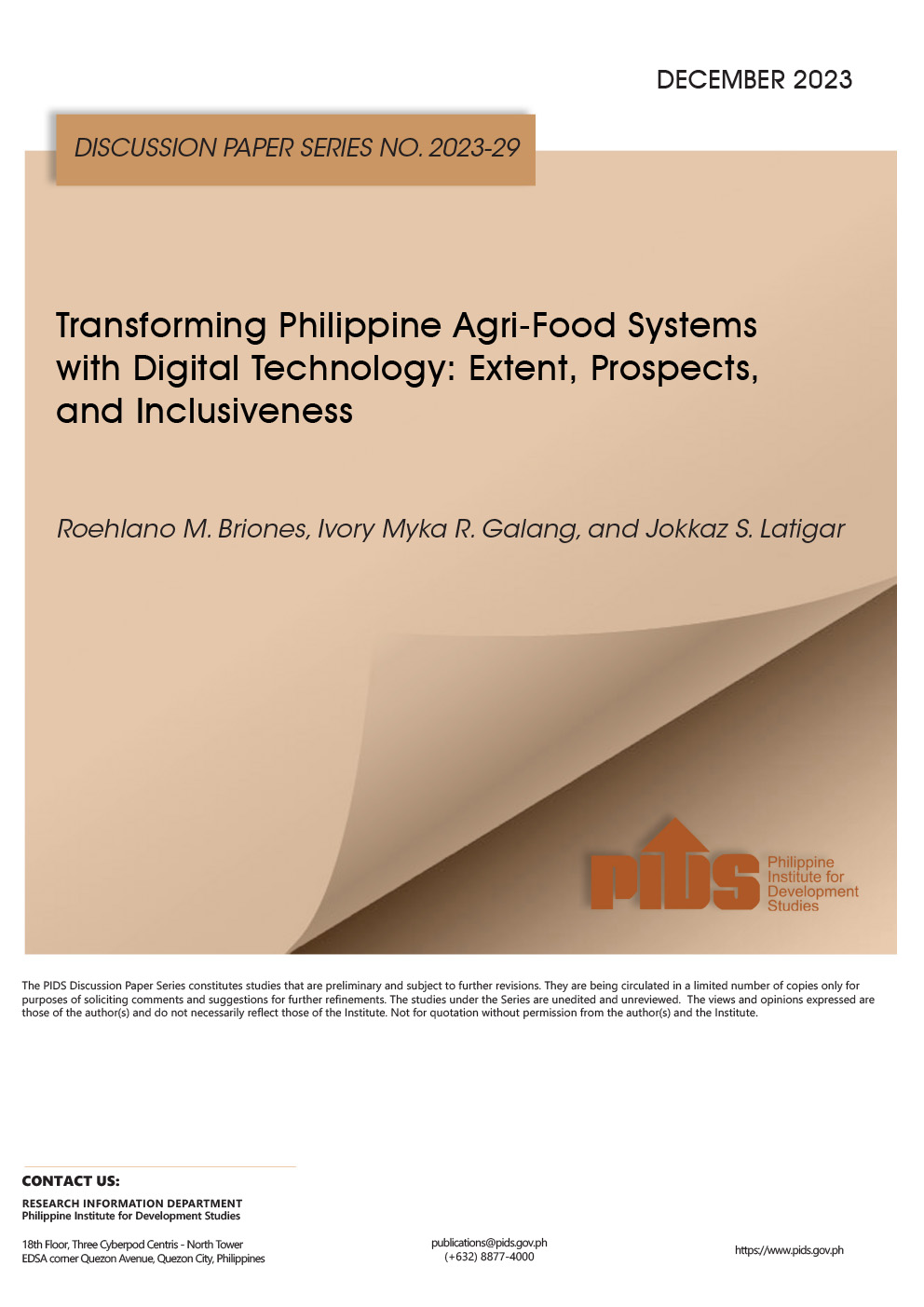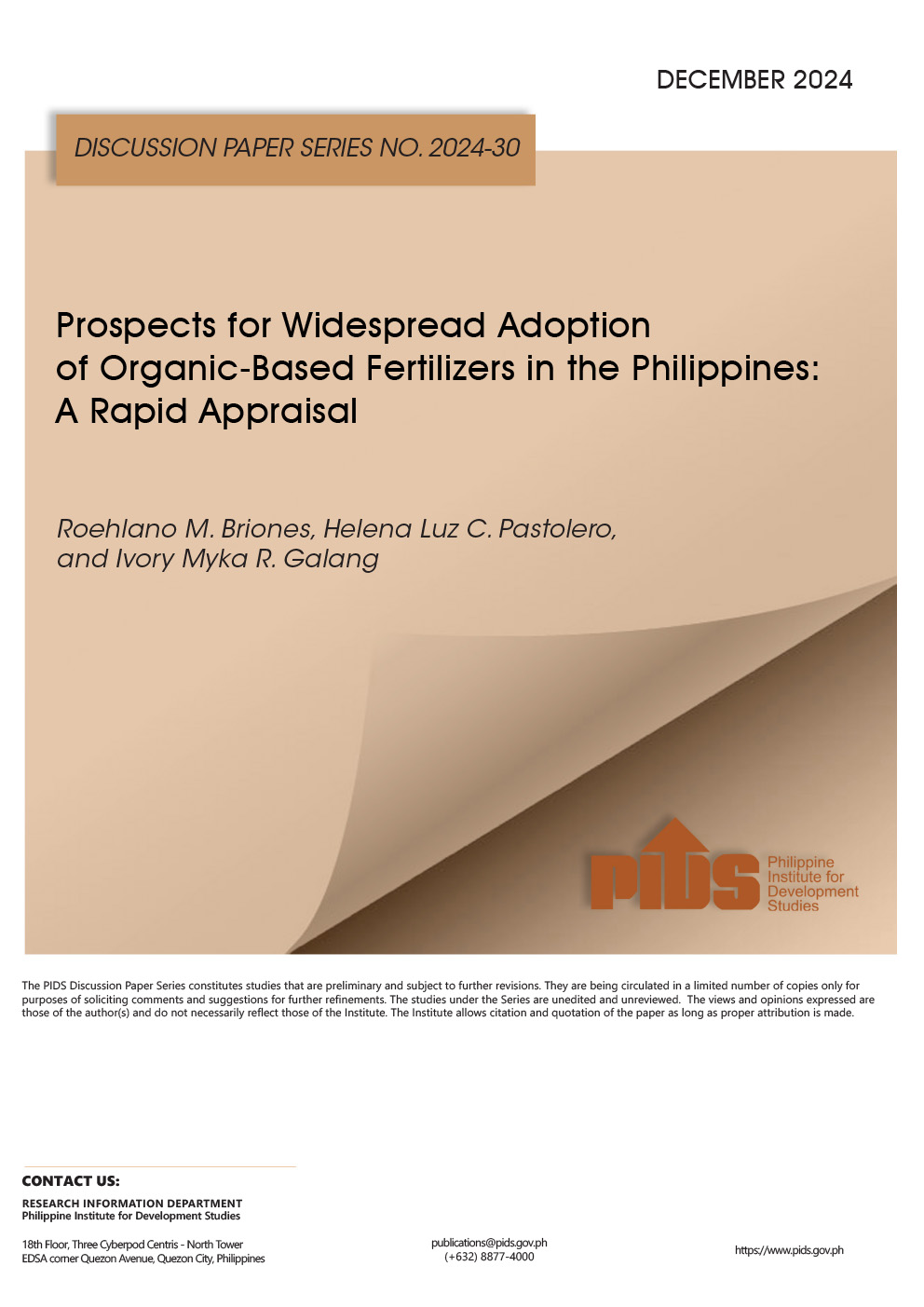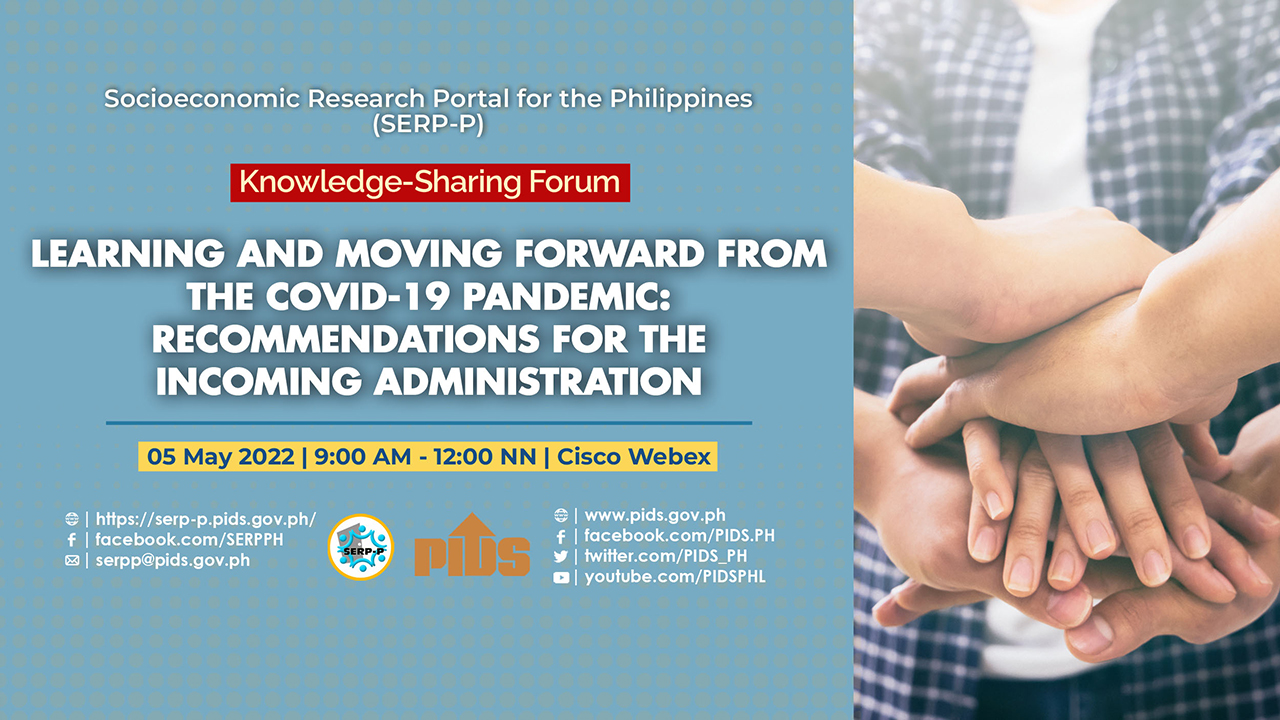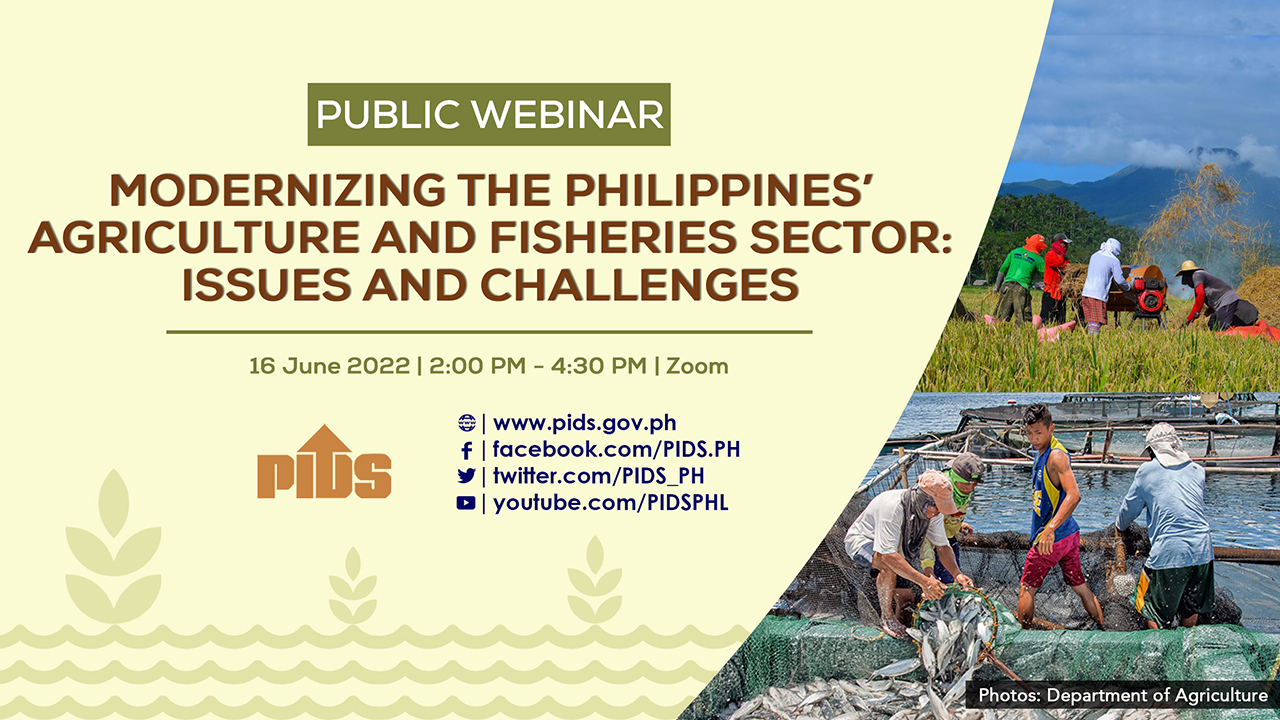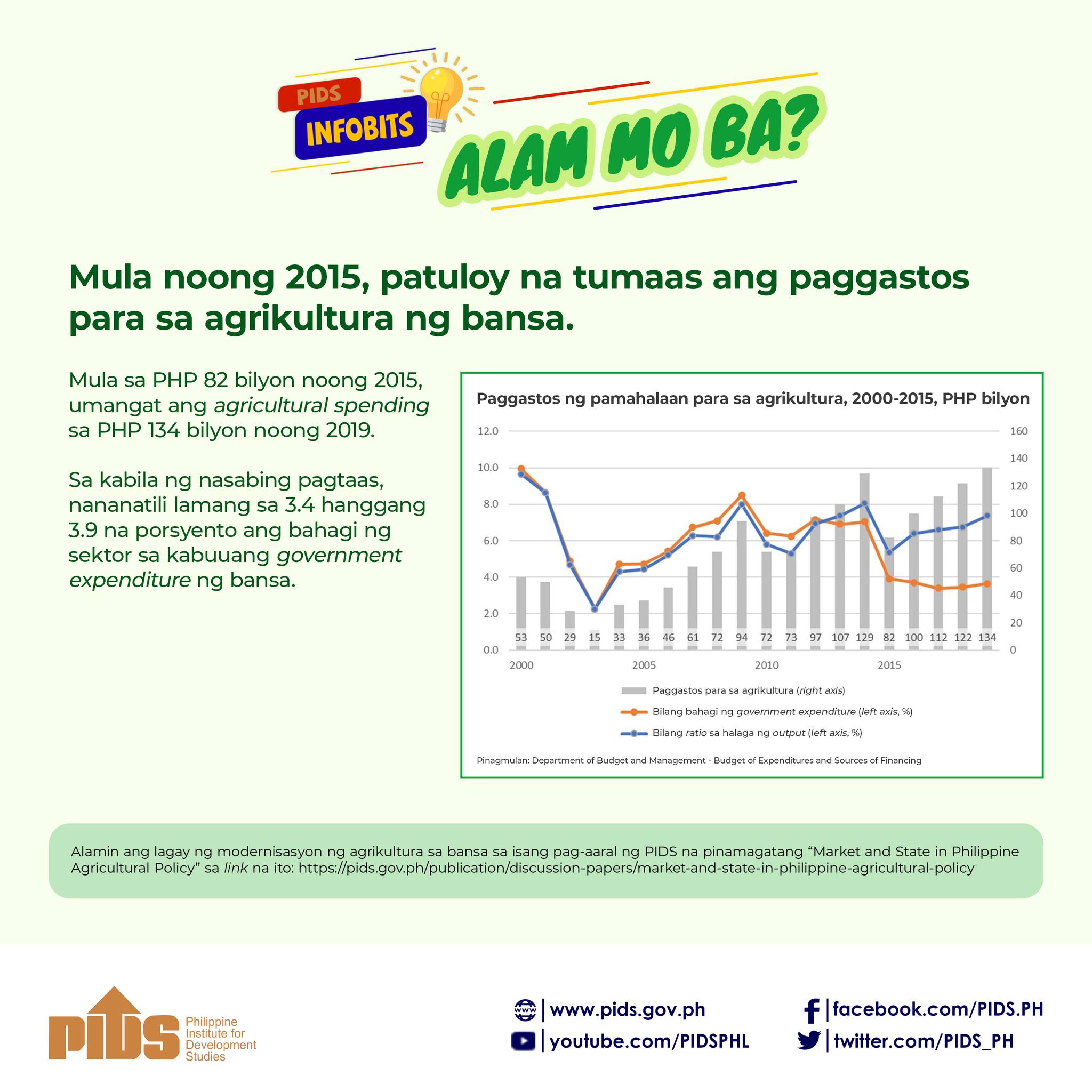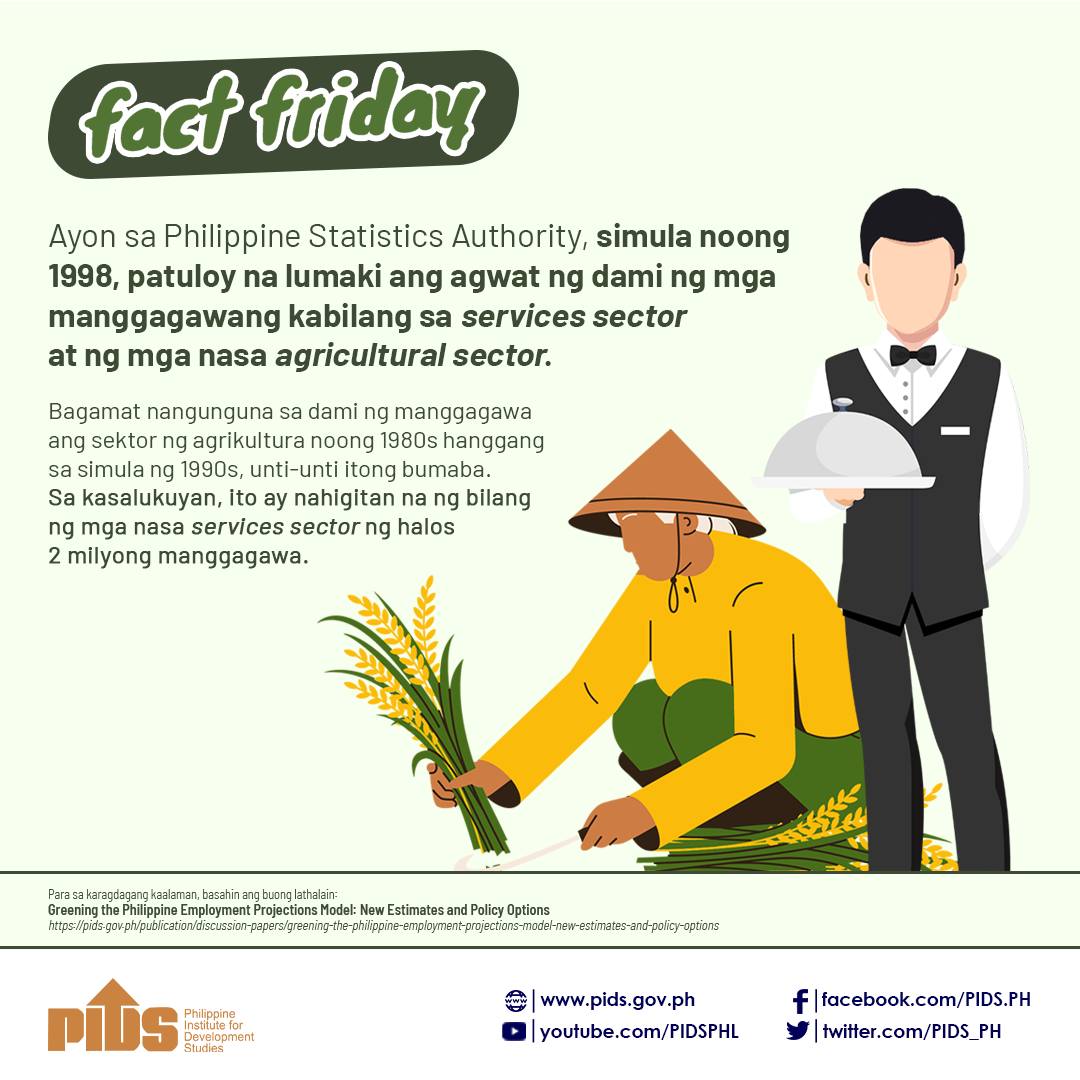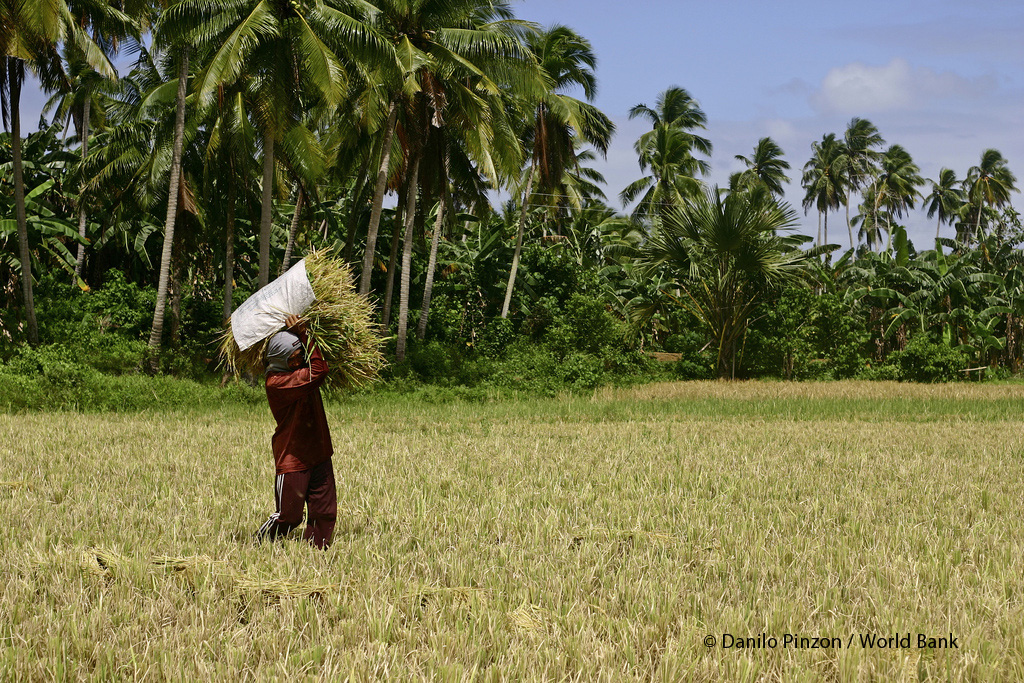
Not all eligible and registered farmers benefit from the special programs of the government’s agriculture insurance program (AIP), a study published by state think tank Philippine Institute for Development Studies (PIDS) found out.
Authors Celia Reyes and Christian Mina, PIDS senior research fellow and former supervising research specialist, respectively, revealed that the Registry System for the Basic Sectors in Agriculture (RSBSA), one of the special programs of the AIP which provides full premium subsidy to subsistence farmers and fisherfolk and covers all insurance product lines, is plagued with a number of problems, particularly in its targeting system.
The RSBSA, a registry of farmers, fisherfolk, and farm laborers, is used as a targeting mechanism for the identification of beneficiaries for different agriculture-related programs and services of the government, including the AIP.
An agricultural producer is eligible if he is part of the RSBSA, provided that he also has an insurable interest on any agricultural asset (e.g., crop farm, fish farm, livestock farm, or farm equipment) and does not receive premium subsidy for the foregoing insurance product from the local government.
Reyes and Mina said that while the RSBSA-AIP covers 75 priority provinces, the program still has low coverage in terms of actual beneficiaries.
In 2014 and 2015, the program included an estimated 330,000 to 430,000 beneficiaries, respectively, of the total 6.5 million registered farmers and fisherfolk. For rice farmers, only 7 percent of the registered 1.96 million were enrolled in the program, and 5 percent for eligible corn farmers, the authors said.
Eligibility, leakage problems
The lax eligibility requirements of the program may cause leakage to farmers who are not supposed to be beneficiaries. Based on interviews and focused group discussions, the authors found that farmers with larger landholdings tend to divide their farmlands into smaller parcels and distribute them among their family members and relatives.
The authors said it is unclear whether the PCIC has done some validation on the true landholding of farmers, which “makes it possible for some farmers to intentionally misreport their total landholding in order to be enrolled in this free insurance program,” they pointed out.
The program, according to the study, should take into account that the change of maximum insurable area from seven to three hectares started only in 2015, thus, “beneficiaries with crop area exceeding both the old seven-hectare and the new three-hectare limits do exist.”
Insufficient funds
The PHP 1.183 billion spent to fund the RSBSA-AIP during its first year was “insufficient to cover a significant number of agricultural producers” that it had to resort to a first-come, first-served policy.
“Agricultural producers who immediately learned about the program and were living in or near the priority areas were able to take advantage of the full premium subsidy,” the study said.
The increase in budget allocation in 2015 and 2016—even if combined—will not be enough to cover all eligible rice farmers, much less all eligible agricultural producers, including those engaged in noncrop production, explained Reyes and Mina.
Furthermore, the lowering of farm size requirement to three hectares also does not make the combined budget sufficient to cover eligible farmers, the authors said. Reyes and Mina argued that to be able to cover all eligible rice farmers alone, the government needs to shell out around PHP 4.8 to P8.6 billion.
System fine-tuning
To address inadequacy of funds, the authors noted the importance of fine-tuning the beneficiary targeting in the budgeting process for the RSBSA-AIP.
There should also be a specific set of guidelines on the use of the RSBSA for subsidy targeting to guide PCIC in the prioritization and estimation of resources needed, which, according to authors, is “a better option than the current first-come, first-served policy”.
The authors also suggest refining the targeting rule for agricultural producers to maximize the limited budget of PHP 1 billion and the need to do a regular validation of the list to avoid leakage of subsidies.
To increase the limited budget of the national government, strengthening partnerships with local government units that can provide complementary resources is also an option, the authors added. ###
If you wish to know more about the study, download a copy of the policy note from the PIDS website.
Authors Celia Reyes and Christian Mina, PIDS senior research fellow and former supervising research specialist, respectively, revealed that the Registry System for the Basic Sectors in Agriculture (RSBSA), one of the special programs of the AIP which provides full premium subsidy to subsistence farmers and fisherfolk and covers all insurance product lines, is plagued with a number of problems, particularly in its targeting system.
The RSBSA, a registry of farmers, fisherfolk, and farm laborers, is used as a targeting mechanism for the identification of beneficiaries for different agriculture-related programs and services of the government, including the AIP.
An agricultural producer is eligible if he is part of the RSBSA, provided that he also has an insurable interest on any agricultural asset (e.g., crop farm, fish farm, livestock farm, or farm equipment) and does not receive premium subsidy for the foregoing insurance product from the local government.
Reyes and Mina said that while the RSBSA-AIP covers 75 priority provinces, the program still has low coverage in terms of actual beneficiaries.
In 2014 and 2015, the program included an estimated 330,000 to 430,000 beneficiaries, respectively, of the total 6.5 million registered farmers and fisherfolk. For rice farmers, only 7 percent of the registered 1.96 million were enrolled in the program, and 5 percent for eligible corn farmers, the authors said.
Eligibility, leakage problems
The lax eligibility requirements of the program may cause leakage to farmers who are not supposed to be beneficiaries. Based on interviews and focused group discussions, the authors found that farmers with larger landholdings tend to divide their farmlands into smaller parcels and distribute them among their family members and relatives.
The authors said it is unclear whether the PCIC has done some validation on the true landholding of farmers, which “makes it possible for some farmers to intentionally misreport their total landholding in order to be enrolled in this free insurance program,” they pointed out.
The program, according to the study, should take into account that the change of maximum insurable area from seven to three hectares started only in 2015, thus, “beneficiaries with crop area exceeding both the old seven-hectare and the new three-hectare limits do exist.”
Insufficient funds
The PHP 1.183 billion spent to fund the RSBSA-AIP during its first year was “insufficient to cover a significant number of agricultural producers” that it had to resort to a first-come, first-served policy.
“Agricultural producers who immediately learned about the program and were living in or near the priority areas were able to take advantage of the full premium subsidy,” the study said.
The increase in budget allocation in 2015 and 2016—even if combined—will not be enough to cover all eligible rice farmers, much less all eligible agricultural producers, including those engaged in noncrop production, explained Reyes and Mina.
Furthermore, the lowering of farm size requirement to three hectares also does not make the combined budget sufficient to cover eligible farmers, the authors said. Reyes and Mina argued that to be able to cover all eligible rice farmers alone, the government needs to shell out around PHP 4.8 to P8.6 billion.
System fine-tuning
To address inadequacy of funds, the authors noted the importance of fine-tuning the beneficiary targeting in the budgeting process for the RSBSA-AIP.
There should also be a specific set of guidelines on the use of the RSBSA for subsidy targeting to guide PCIC in the prioritization and estimation of resources needed, which, according to authors, is “a better option than the current first-come, first-served policy”.
The authors also suggest refining the targeting rule for agricultural producers to maximize the limited budget of PHP 1 billion and the need to do a regular validation of the list to avoid leakage of subsidies.
To increase the limited budget of the national government, strengthening partnerships with local government units that can provide complementary resources is also an option, the authors added. ###
If you wish to know more about the study, download a copy of the policy note from the PIDS website.

